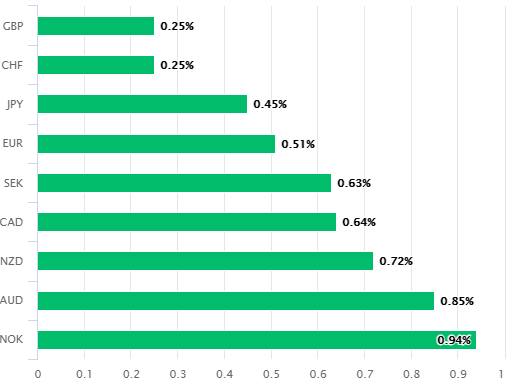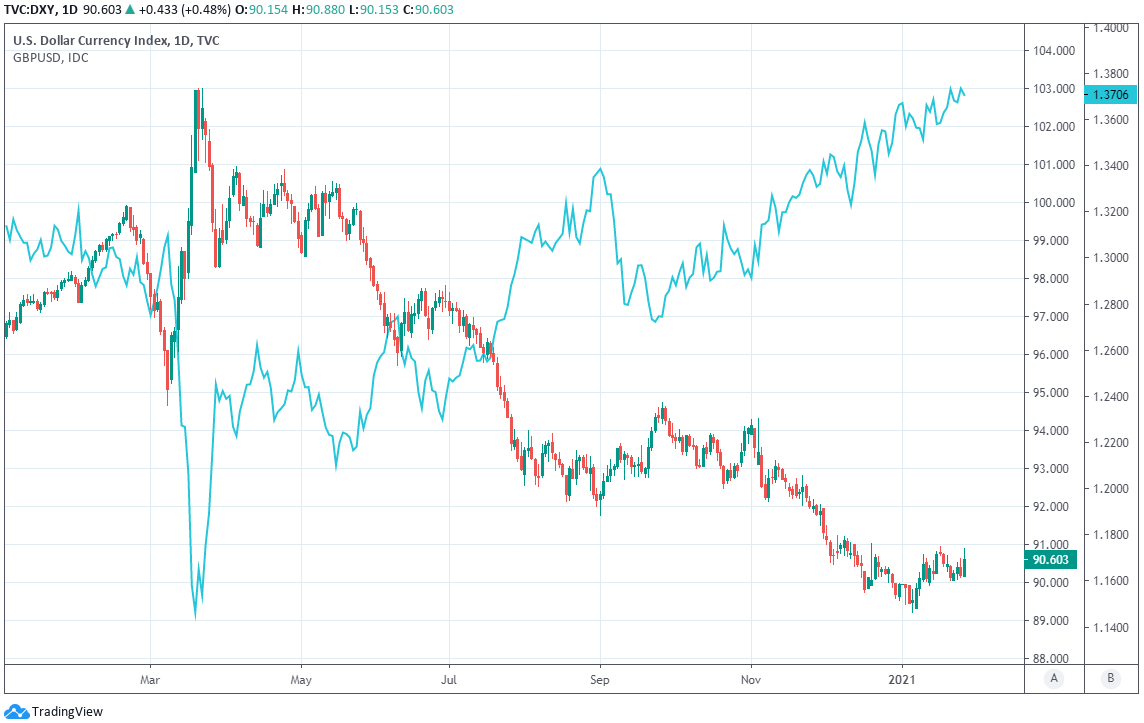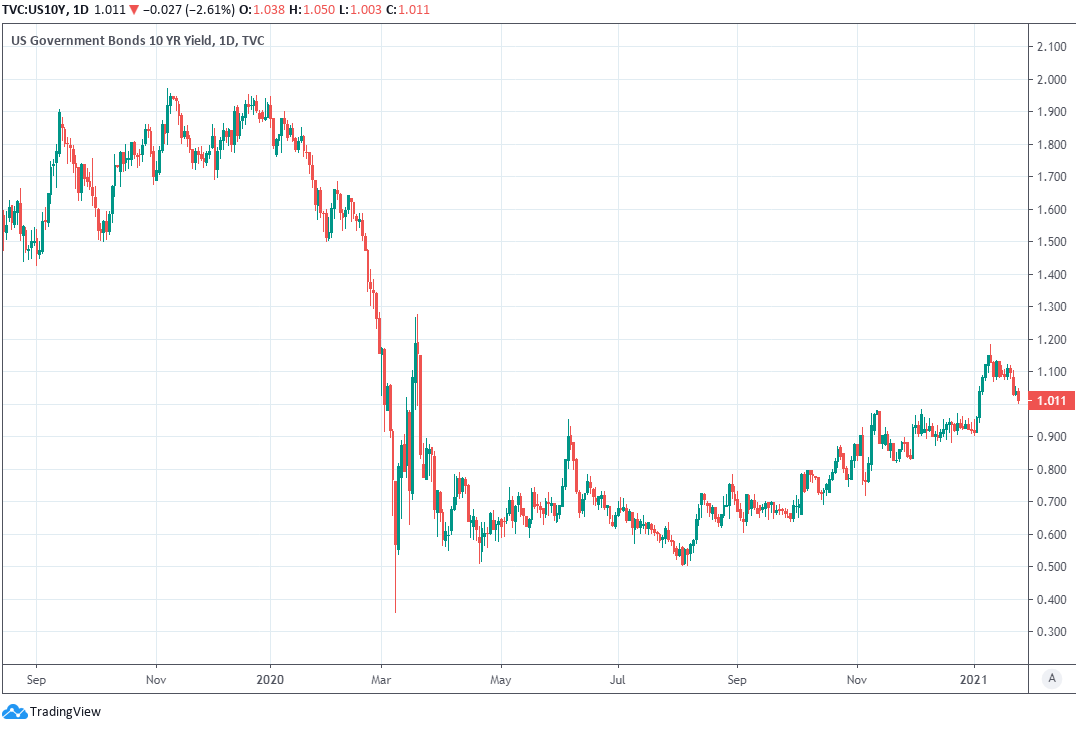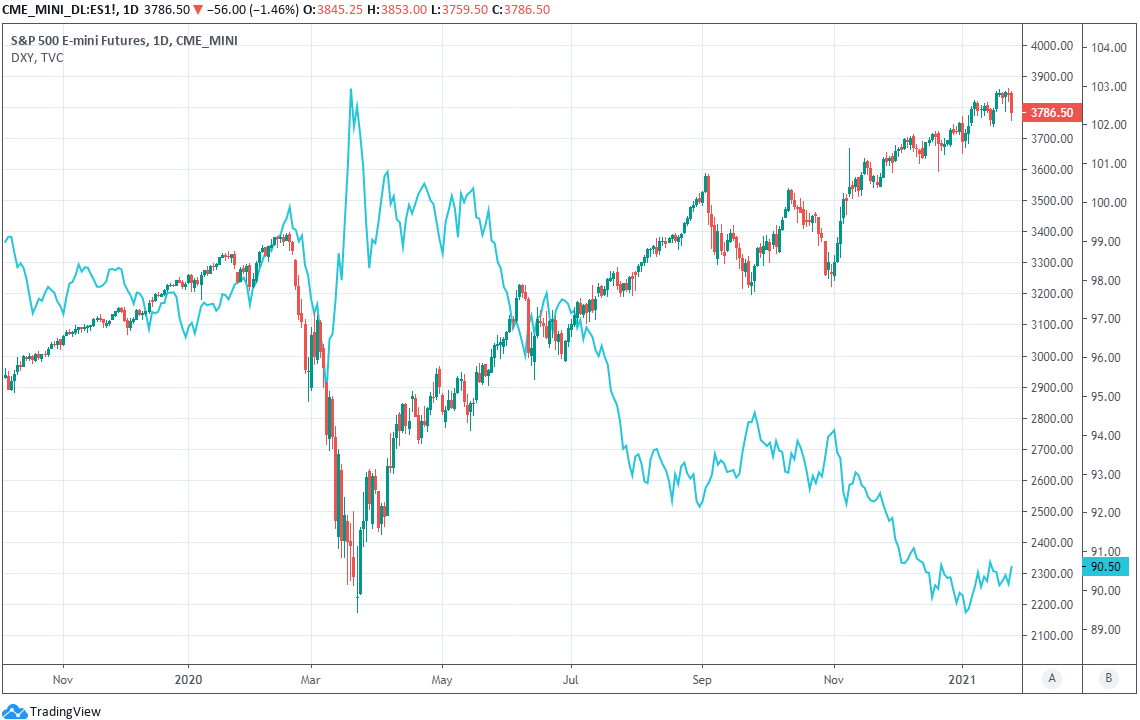Dollar Swings Higher as Fed Chair Powell Set to Face Awkward Questions
- Written by: James Skinner
- Fed seen leaving all policy settings unchanged in Jan.
- But questions to be asked on bond yields, QE tapering.
- Fed to assure against premature stimulus withdrawal.
- But fiscal policy, yield outlook requires balancing act.
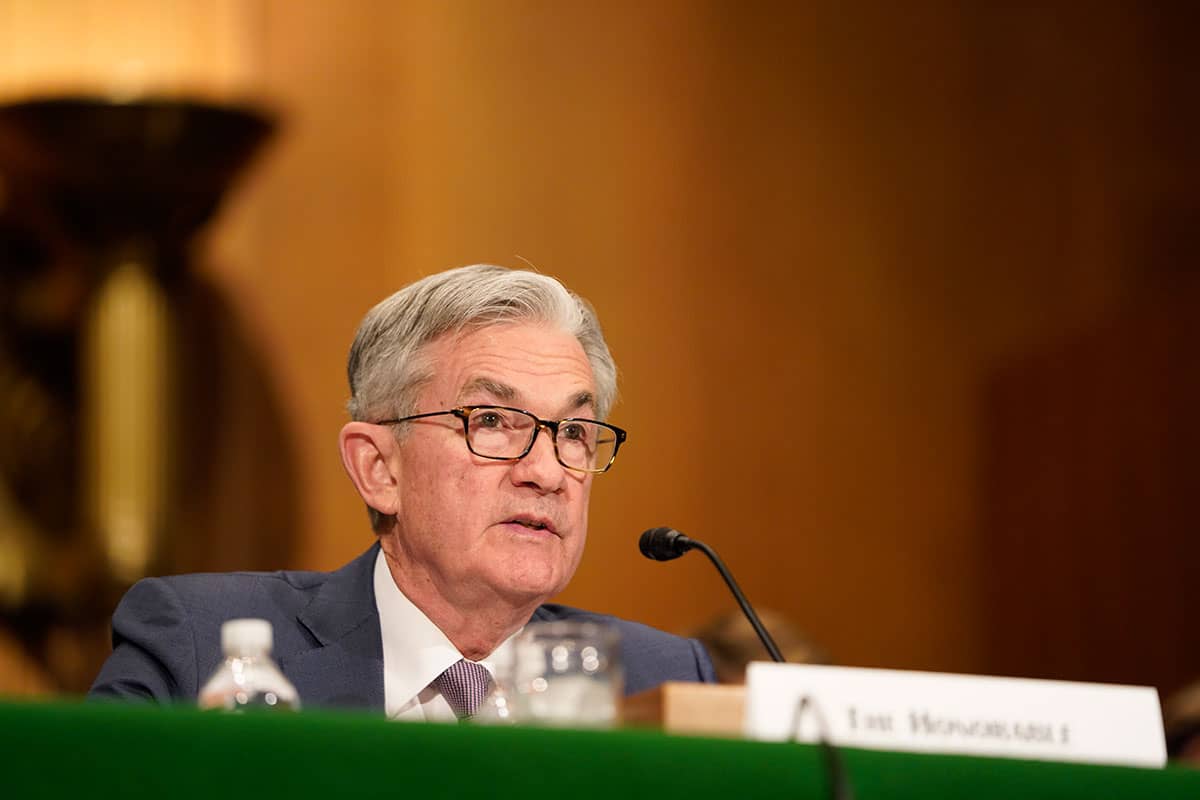
Above: Federal Reserve Chairman Jerome Powell. Image © Federal Reserve.
- GBP/USD spot rate at time of writing: 1.3697
- Bank transfer rate (indicative guide): 1.3350-1.3447
- FX specialist providers (indicative guide): 1.3525-1.3635
- More information on FX specialist rates here
Dollar bears took no chances in advance of Wednesday's Federal Reserve (Fed) decision as all major U.S. exchange rates swung higher ahead of an event that will see awkward questions asked of Chairman Jerome Powell and potentially also investors in American stocks and bonds.
The Federal Reserve is widely expected to leave its interest rate unchanged within its current 0.%-to-0.25% range and to continue with its $120 bn per month program of quantitative easing (QE) which is split between $80bn per month of U.S. government treasuries and $40bn of mortgage bonds.
Rate setters added to their regular statement in December when saying that QE is likely to continue "until substantial further progress has been made toward the Committee's maximum employment and price stability goals," and economists universally expect that message to be repeated at 19:00 Wednesday.
But some also expect the bank to double down on that message after some of the bank's staff contemplated aloud earlier this month the potential timing of an eventual decision to wind down the QE program, which helped to drive a surge in bond yields and briefly lifted the Dollar against all major currencies.
"In his last press conference, Chair Powell stuck with his well tested line that the Fed isn't even thinking about the timing of when it might taper QE, let alone talking about it. However, other FOMC members have talked about that issue a bit in the six weeks since the last meeting. We presume this will be the key issue of the press conference, and we would expect Powell to stick with his prior script," says Stephen Gallo, European head of FX strategy at BMO Capital Markets. "The fact that equities have rallied by 4% and the USD hasn't moved over an entire inter-meeting period suggests that the USD-equities correlation is softening. We would nonetheless expect a calm, nothing-new FOMC to lead to a modest increase in equity risk appetite and a modest drift lower in BBDXY. That is our base-case scenario for today."
Above: U.S. Dollar performance against major currencies on Wednesday.
Dollar gains built further after core durable goods orders data surprised on the upside for December and oil inventories measured by the Energy Information Administration posted a surprise -9.9 million barrel decline for last week.
Although the Dollar was already on its front foot beforehand and uncertainty about the Fed's likely message on tapering, notably whether it comes with any caveats, may explain as much as anything else the widespread gains in U.S. exchange rates on Wednesday.
Exactly how the Fed chooses to go about assuring its support and convincing markets it doesn't intend to step off the field too early will be the primary focus of investors, although the question and answers session following the press conference will also be important.
This could see Powell forced to address the sensitive topic that is the likely mismatch between the Fed's 2021 bond purchases and the new issuance that's expected to emerge from President Joe Biden's Treasury. Fiscal largesse is a recipe for higher government bond yields, which could eventually force the bank to choose between the risk of financial market volatility and being forced to automatically lap up and effectively finance whatever budgets the new administration allocates to its priorities.
"The Fed’s current rate of treasury purchases is less than half of net new issuance needs this year – not even including the Biden stimulus. How can tapering even be a remote consideration if this torrent of issuance threatens to take long rates sharply higher?" asks John Hardy, head of FX strategy at Saxo Bank. "A side point is that there is no such thing as tapering and yield curve control until or unless the US Treasury is tightening its belt dramatically."
Above: U.S. Dollar Index shown at daily intervals alongside Pound-to-Dollar rate (blue line).
Bond yields reflect supposedly risk-free compensation for investors, while rising yields reduce the relative value of riskier assets like stocks and commodities. As a result, any warning on Wednesday of higher yields further down the line could be a potential curveball for some markets as well as a possible source of further short-term Dollar gains.
Investors have so-far assumed that issuance resulting from government spending will be automatically lapped up by a Fed that has closely matched its bond purchases with the extraordinarily increased spending needs of the government throughout the pandemic.
"As the year progresses, the Fed will have to walk a fine line to avoid a disorderly increase in real bond yields," says Raphael Olszyna-Marzys, an economist at J. Safra Sarasin. "So far, it has managed to keep real yields low, while boosting inflation expectations – one important reason for risk assets’ stellar performance. But the gap between real yields and inflation expectations has now reached its highest level since the 2013 ‘taper tantrum.’"
Above: U.S. 10-year government bond yield.
Meeting the needs of the public purse was necessary to preserve “market functioning” and minimise scarring from the pandemic but if the Fed allows investors to go on assuming it'll underwrite whatever the new administration decides to borrow and spend then it would also risk aiding and abetting an eventual 'taper tantrum' that could turn stocks and bonds on their heads.
The subject of rising yields and a tapering of the Fed's QE program is made all the more pertinent by a recent increase in inflation, which has been supported not only by rising energy prices, but also fiscal stimulus and other coronavirus-related factors.
"His top lieutenant (Clarida) and other members have already started talking aloud about scaling back accommodation at some point. That was not by accident, in our view. We think the Fed is trying to plant that seed now in order to try to buffer any volatility later, even if that tree grows slowly," warns Adam Cole, chief FX strategist at RBC Capital Markets.
Above: S&P 500 index futures shown at daily intervals alongside Dollar Index (blue line).

